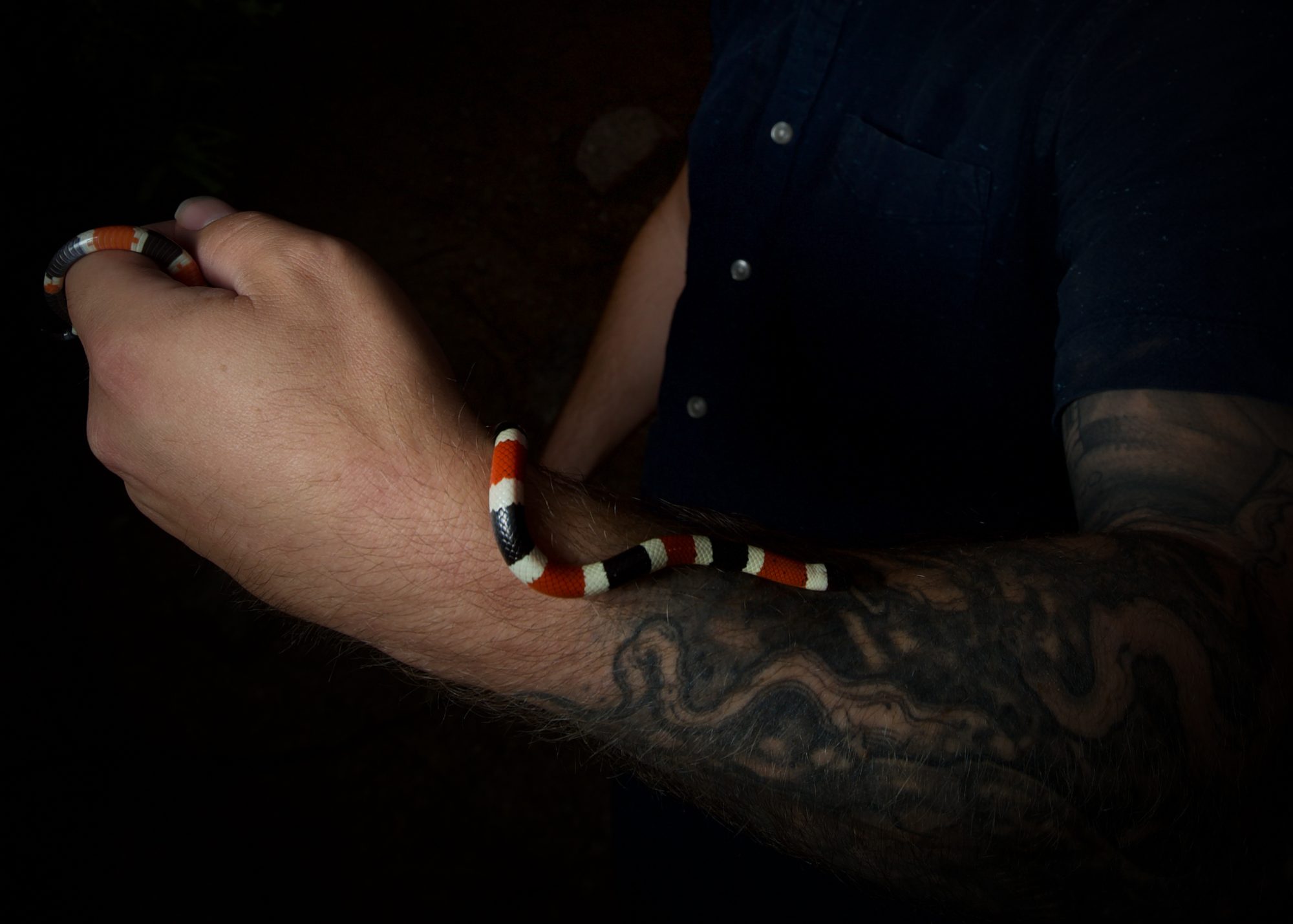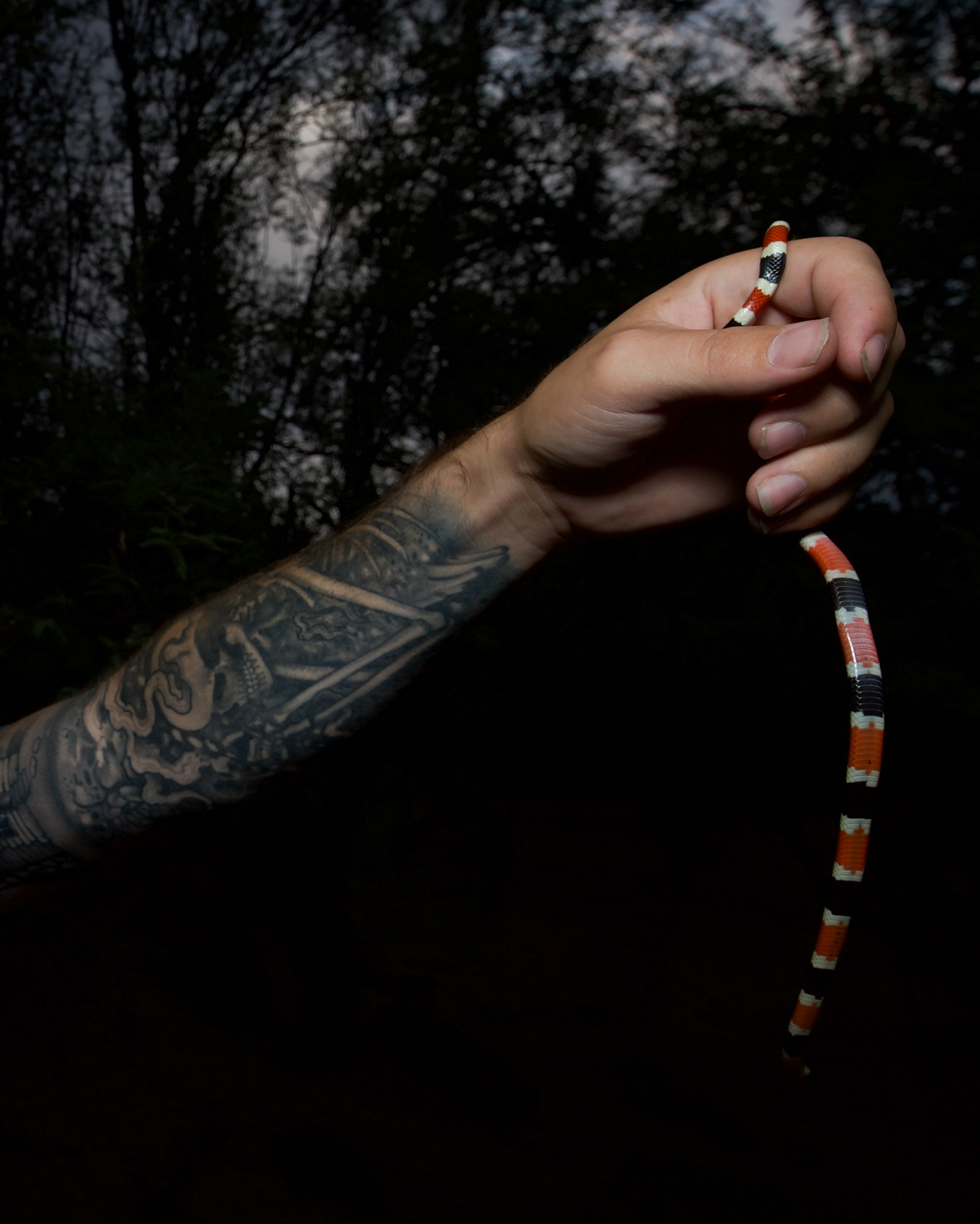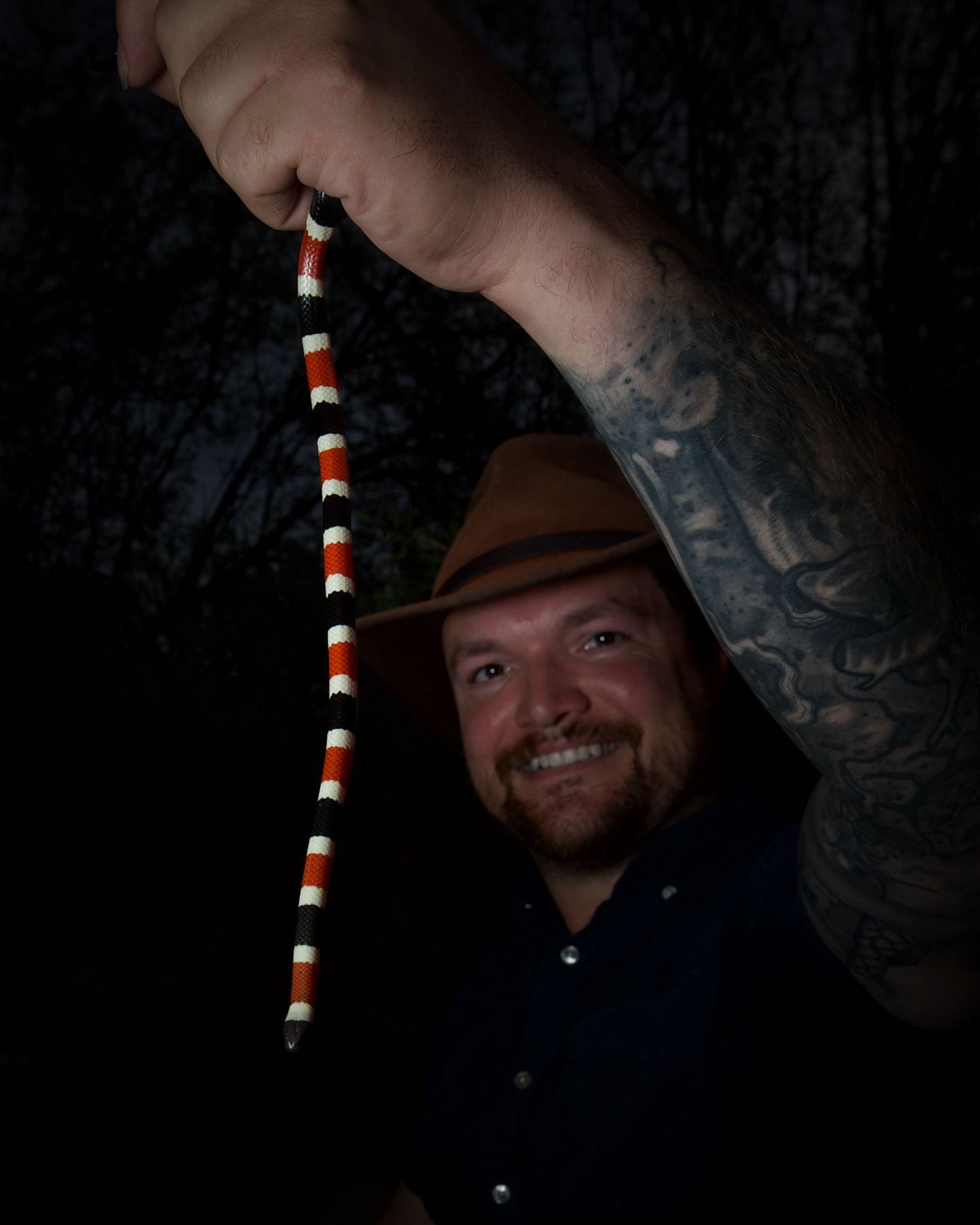Yes, the summer months here in Arizona are unbearable, but you know what I like about them? I think you know the answer: SNAKES!
I have to give this disclaimer: DO NOT pick up these snakes; I knew what I was getting into, and was with a professional, but anything can happen, and wild animals can be unpredictable!
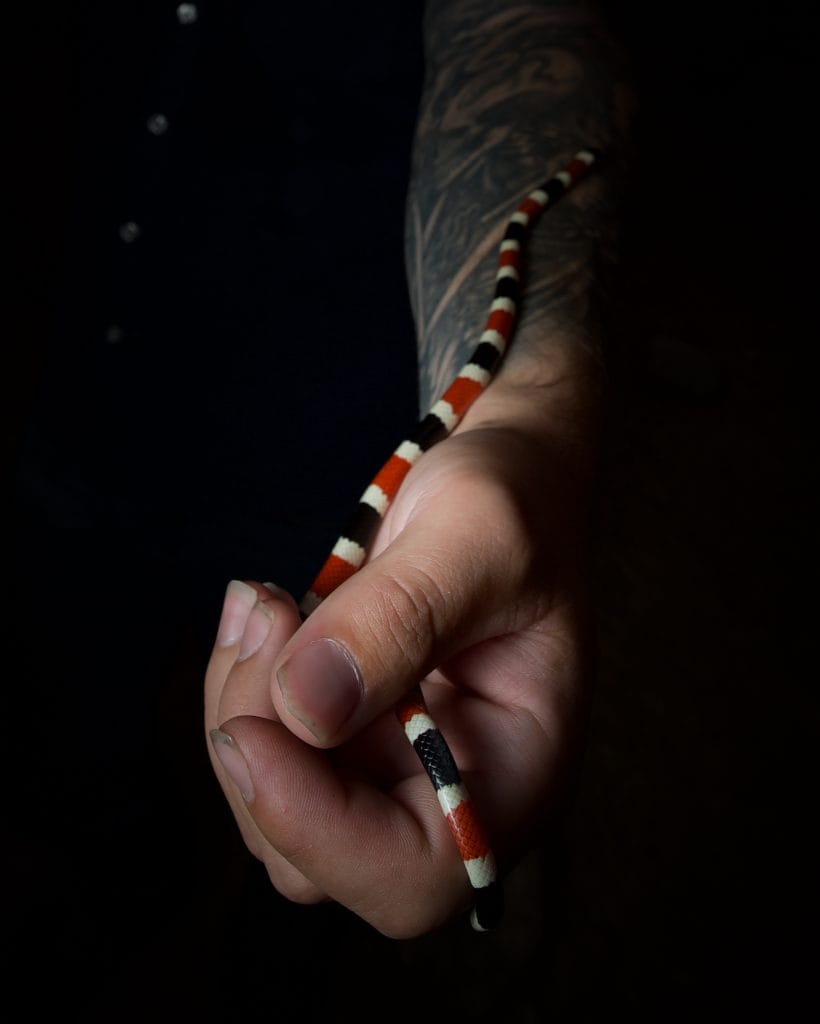
I’m sure you’ve heard the rhyme, it goes somewhat like this: Red on Black, Friend of Jack; Red on Yellow, Kill a Fellow. This rhyme often works, but not always, and certainly not around the world. In the United States, we have 3 types: Eastern, Texas, and Sonoran (Western). If it wasn’t obvious, I am holding the Western Coral Snake. In Arizona, the yellow bands can also be white. All U.S. species are found in the Southern Regions.
Their aposematic coloration wards off potential predators; therefore, similar banding is adopted by other harmless snake species. Consequently, many of these snakes are killed by misunderstanding and frightened individuals.
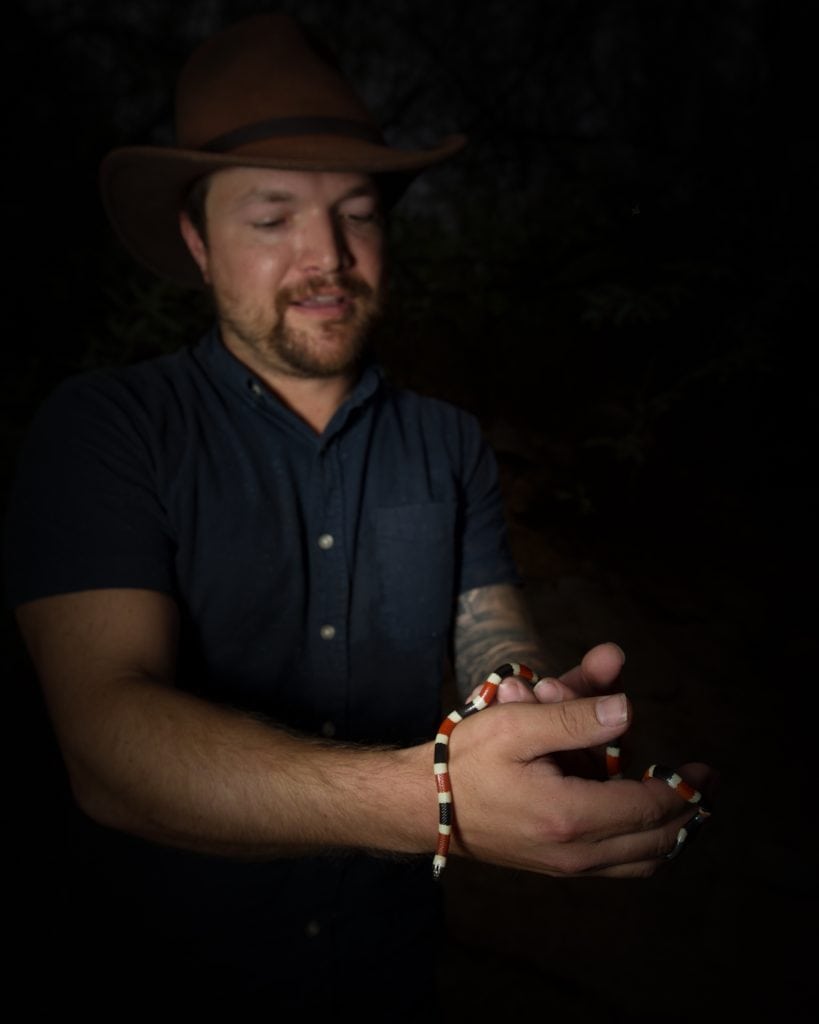
These snakes are vibrantly colored—especially the Eastern Variety, here is the States. Their banding encircles their entire body, but tends to be duller on their bottoms. The front of their head is black, reaching just beyond its eyes. Some species reach up to 3 feet long, and some Western Corals are thin as a pencil.
Here in Arizona, most venomous snake species are pit vipers (rattlesnakes). The Western Coral, however, is closer to the cobra, black mamba, or even the sea snake. You might find it interesting, or alarming, to learn the Coral Snake’s ranking as the second most venomous snake in the world, only surpassed by Africa’s Black Mamba.
In terms of our relationship with these animals, venomous does not always equate to deadliest. While their neurotoxin—toxins that target the nervous system and even the brain—certainly is deadly, their means of injection are weaker than that of the rattler, effectively making the rattlesnake a greater threat. A set of small, weak, non-retractable fangs are deadly to small reptiles and amphibians, and other prey items; To a human, however, its small stature means it has to really work to invenimate a victim. Like the Gila Monster, the coral snake will have to chew, so the venom will flow.
If you are bitten, you may not even feel it for hours. The resulting pain, however, will be memorable, and could lead to life-threatening cardiac arrest if not addressed. According to Live Science, no deaths have been recorded in the U.S. since the 60s, and no Western deaths have been reported at all. When bites do occur, it’s usually the result of ignorance—not understanding the animal. For example, picking it up in such a way that it fears being crushed, could result in a bite, especially along weak flesh, such as the webbing of one’s fingers.
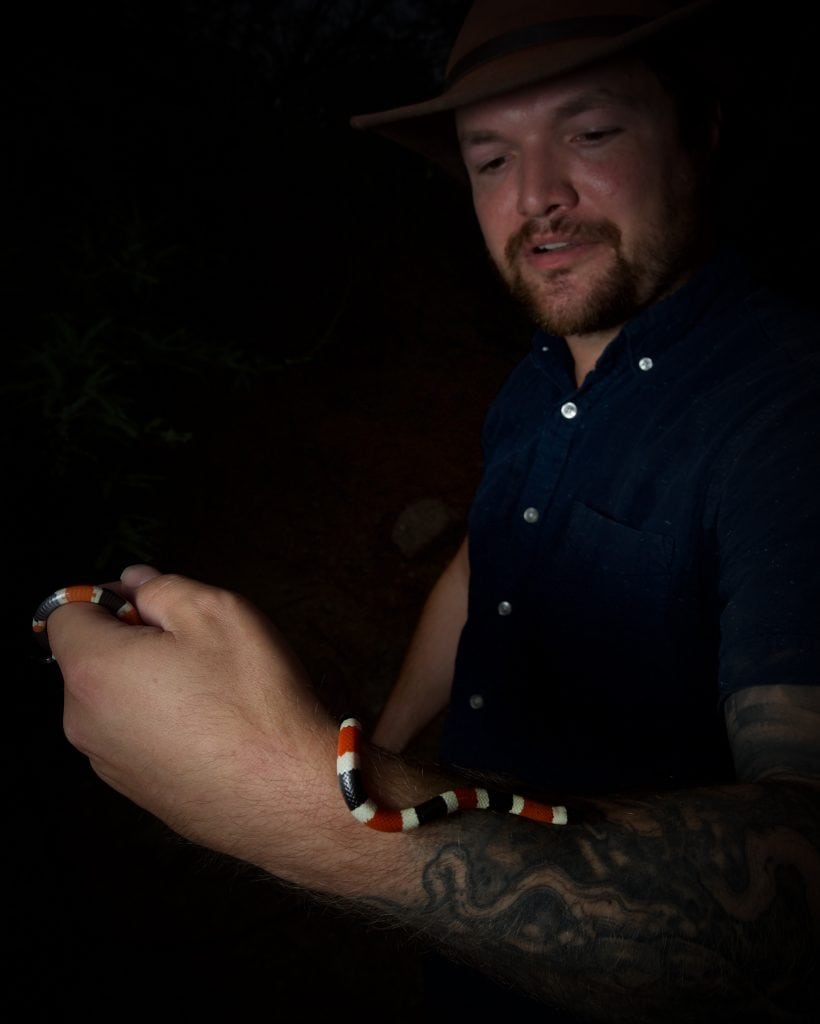
Corals are shy creatures, preferring to hunt at night, and hide during the day—an overcast day might be the exception. They’re often found hiding in rocky areas, or under debris. When threatened, they’ll let out a small squeek—not from their mouths, but…well, they fart. If you find one, please don’t kill it; they’re known to be fairly docile, and would prefer to run from you, rather than attack; Simply appreciate it from a distance.
I hope you enjoyed that read! If you would like to support my work, please consider one of the following:
GiveSendGo: https://www.givesendgo.com/theazjones
Patreon: https://www.patreon.com/theazjones
Store: https://www.theazjones.com/store

